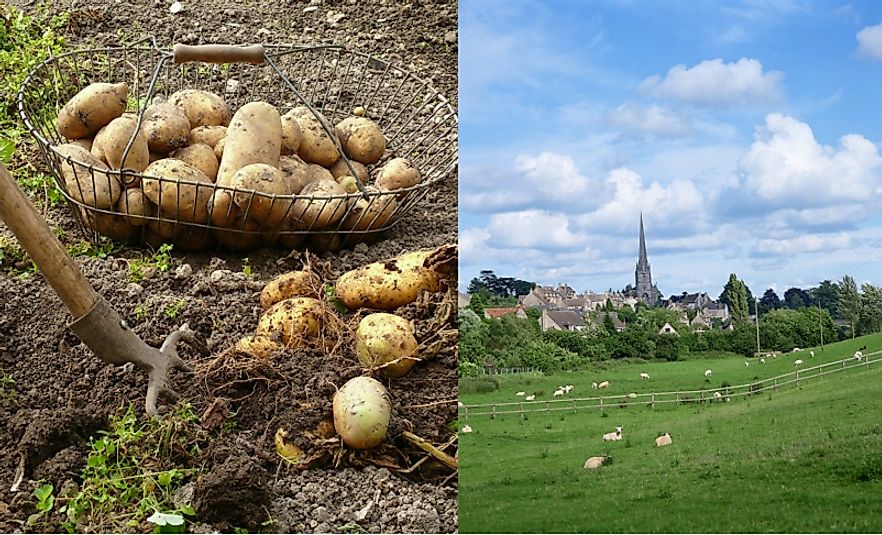The Scottish Agricultural Revolution And The Lowland And Highlands Clearances

An "Agricultural Revolution" is a period of increased agricultural productivity that is characterized by improved farming technologies and increased outputs, such as that seen during the 18th and 19th Centuries in Europe. New farming techniques and better breeding techniques led to increased food production leading to a spike in population and overall health. The first agricultural revolution, known as the Neolithic Revolution, took place between 10,000 and 2,000 BC and transformed human society from hunting and gathering to farming. The 18th Century revolution witnessed many agricultural revolutions, especially in Europe. One such agricultural revolution was the Scottish Agricultural Revolution.
Overview of the Scottish Agricultural Revolution
One of the areas where there was a zeal for improvement in Scotland in the 17th Century was in the field of farming. The need to make agriculture more profitable and a sustaining venture for the local communities necessitated a shift from a traditional system to an improved system. Scottish Agricultural Revolution was a series of improvement in agricultural activities which began in the late 1600s and continued in the 1800s. The revolution began with the improvement of the Lowland farmlands and the transformation of Scottish agriculture from traditional agriculture to one of the most modern and productive agriculture in Europe. The traditional systems had existed for hundreds of years with the land being worked by the cottars on subsistence farming. Crops were grown in the run-ring systems that were divided between communities around the farm settlement. The term “Scottish Agricultural Revolution” was used in the 20th Century to refer to the period of dramatic agricultural change which occurred in the 18th and 19th Centuries.
History of the Scottish Agricultural Revolution
Before the onset of the agricultural revolution in Scotland, there was little trade between different areas in the country due to the traveling difficulties arising from the Scottish terrain and poor transportation infrastructure and a lack of modern transport technologies. Most of the farming was done on the lowland fermount where only a handful of families farmed an area that is suitable for more than three plow team. Plowing was formerly done with wooden plows pulled by oxen. In 1695, three acts of parliament were passed to allow consolidation of run-rings and division of common land. A society promoting agricultural improvement was formed in 1723 to spearhead the growth and development of Agriculture. Improvement continued into the 19th Century with the introduction of reaping machine, soil drainage system, and other widespread agricultural improvement.
Societal Impact
The onset of the Scottish Agricultural Revolution brought about significant changes in land management. Landlords rented out their land to single-tenant farmers who were able to pay cash rent. Larger expanses of land were put into production through drainage of marshes. The land became more profitable. Haymaking and crop rotation were introduced. The introduction of certain crops like potatoes improved the diet of the Scottish peasantry. There was also increased specialization with areas such as Lothian becoming a major center of grains while the Ayrshire area focused more on livestock breeding.
Negative Consequences
The Scottish Agricultural Revolution led to the Lowland and Highland Clearances, which saw thousands of cotters and tenant farmers displaced from the farms which they had occupied for many generations. Only a handful of powerful families like the Dukes ended up with the best land and controlled most of the economic activities of the area. Highland clearance also led to forced displacement of people for sheep farming. Some of the farmers emigrated to Glasgow, Canada, and Northern England to look for opportunities to own and farm their own land. Those who remained on the Highland were confined to small rented farms without any definite tenure to raise crops and animals.











